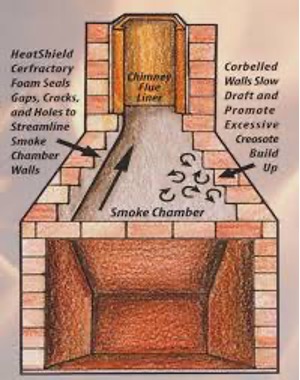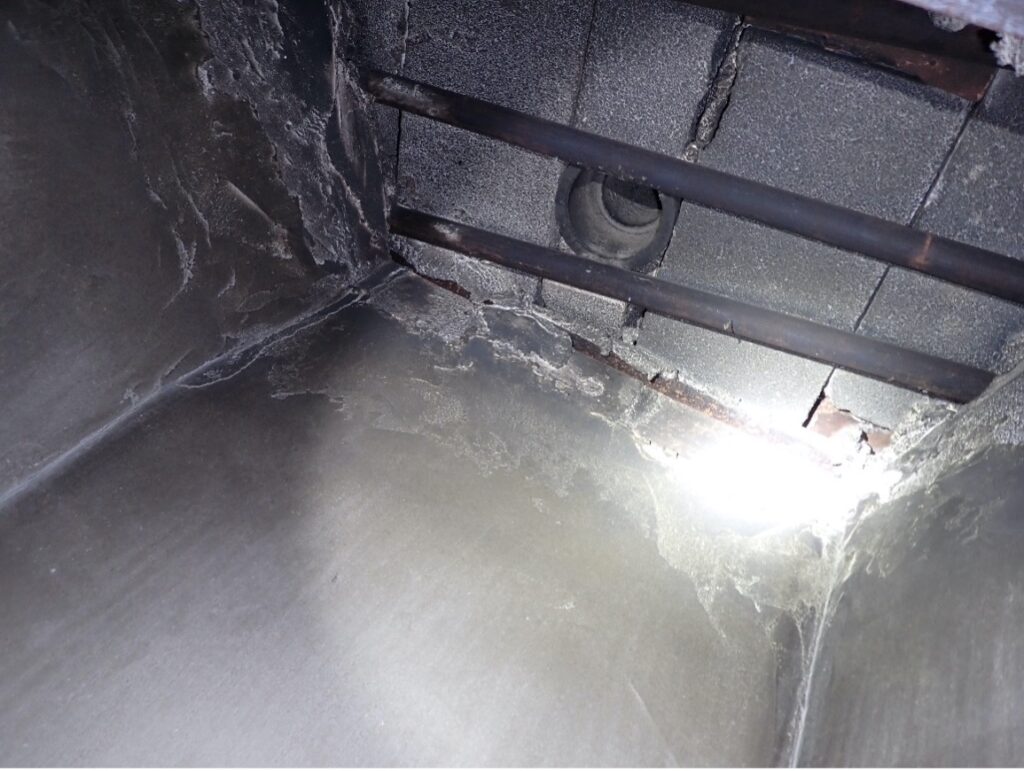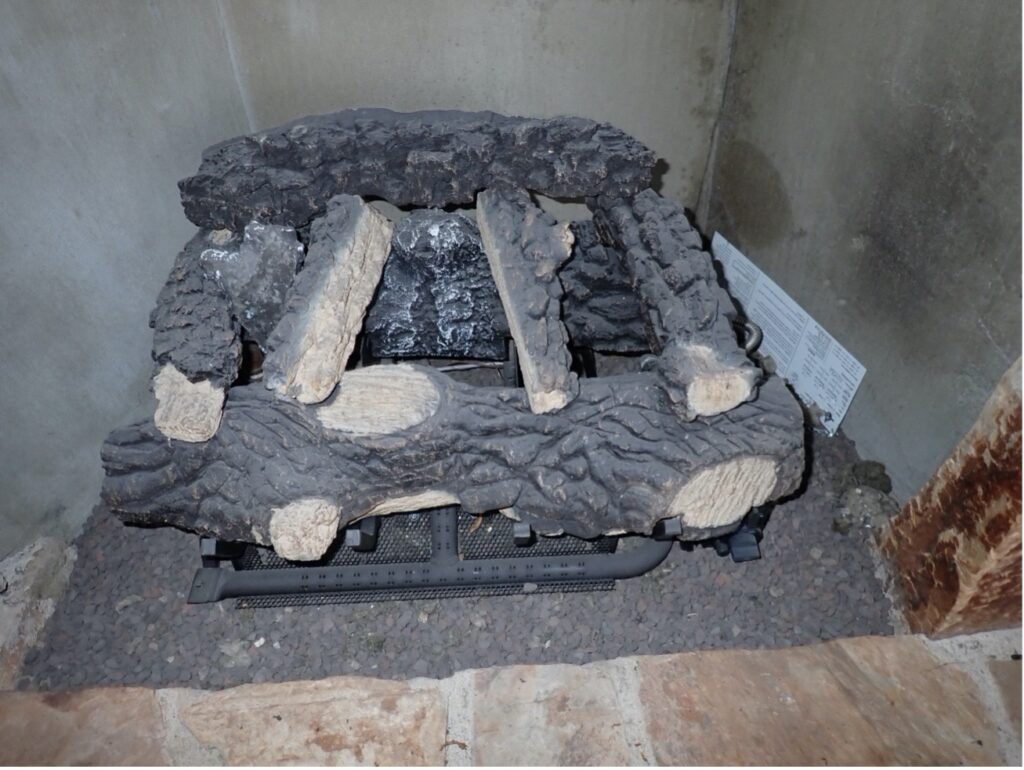As fall begins, people start to think about things associated with this time of year and if you have a fireplace in your home, you may be thinking about having a fire in the fireplace. While the warmth of a fire can be comforting, a fire outside of the fireplace would be a disaster. In order to reduce the potential for a damaging fire or to keep harmful gases from entering the home, there needs to be a properly constructed smoke chamber, flue and chimney.

If the chimney is solid masonry construction, in many cases the throat of the smoke chamber has bricks that are “corbelled”. The jagged edges of the corbelled bricks create a disruption that tends to retard the flow of smoke and gases up the flue which presents an increased risk for backdrafting of soot and other indoor air contaminants.
Once the smoke leaves the smoke chamber, it travels up the flue which should be a continuous path for the hot gases to exit the structure. The flue should be constructed of clay flue tiles that have sealed joints, however, in many cases the mortar that seals the joints and/or the flue tiles are improperly installed which can allow hot gases to enter the home.
Even if you have a prefabricated fireplace with a metal flue, improper installation of the flue pipes can result in openings in the flue that cause the same concerns as those found with a masonry chimney.
The only way to ensure that your fireplace is ready for a fire is to have it televised. This process involves taking a special camera and pushing it through the chimney. Ideally the camera would have a rotating head that gives you a complete view of the interior of the chimney and the operator should focus on each joint in the flue tile as well as any cracks that might be observed. In order to make sure there isn’t a new defect that has developed since the fireplace was used last year, Ideally the fireplace should be televised every year before use.
While fireplaces can be enjoyable, fireplaces can also be a significant source of energy losses either when in use or not and care should be taken to reduce the impacts from fireplaces. Partially sealed flues allow conditioned air to escape from the home creating a “stack effect” that can draw additional exterior air into the residence.

In order to reduce the potential for a “stack effect” to occur, when not in use, dampers (if present) should be closed and insulated dampers should be inserted in the flues between fireplace uses with another possibility being to install a top sealing damper on the top of the flue that would reduce air from entering the chimney from the exterior.
For a simple explanation of the “stack effect”, here is a link to a webpage from the Canadian Research Council that explains this phenomena: http://web.mit.edu/parmstr/Public/NRCan/CanBldgDigests/cbd104_e.html
In order to further understand heat loss through a fireplace, READ THIS ARTICLE that may be useful.
For more information regarding chimney dampers, is available HERE from a local supplier that provides examples of the types of products that are available.
Care should be take to ensure that fireplaces are safely constructed outside of the fireplace. There should be no combustible materials within certain clearances from the face of the fireplace that vary depending on the size of the fireplace. There should be an ember screen or glass panels covering the face of the fireplace, however, if there are glass panels on the face of the fireplace, there should be screening on the glass to prevent inadvertent burns from touching hot glass.
If there is a gas log lighter for the fireplace, the gas supply pipe should be properly configured and sealed to prevent hot gases from escaping the smoke chamber. If the fireplace has been converted to a gas log set, care should be taken to make sure the damper is open when the fireplace is lit, and it is recommended that a damper interlock be installed.

If there is a gas log lighter for the fireplace, the gas supply pipe should be properly configured and sealed to prevent hot gases from escaping the smoke chamber. If the fireplace has been converted to a gas log set, care should be taken to make sure the damper is open when the fireplace is lit, and it is recommended that a damper interlock be installed.
Finally, some fireplaces may not be appropriate for use as there are numerous ventless fireplaces that are sold. These are units that do not have any vent above the gas log set and the gas that is burned can result in build-up of Carbon Monoxide in the residence that can affect indoor air quality. If these units are going to be used, the use should be limited and a window should be kept open while the unit is in operation.
